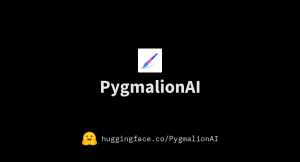Pygmalion AI, an innovative artificial intelligence system, has gained attention for its capabilities in various domains. However, like any technology, it comes with its own set of limitations that users should be aware of.
Cost
One of the primary limitations of Pygmalion AI is its cost. Implementing and maintaining this AI system can be quite expensive. The initial setup, including hardware, software, and personnel training, can require a significant budget allocation. Additionally, regular updates and improvements may also incur ongoing costs.
Efficiency
While Pygmalion AI offers remarkable capabilities, it may not always operate efficiently. The processing power required for complex tasks can strain computational resources, leading to slower response times. Users might experience delays in obtaining results, especially when dealing with large datasets or intricate tasks.
Power Consumption
Pygmalion AI demands a considerable amount of electrical power. The high-performance hardware required to run the AI efficiently can lead to increased energy consumption. This could have environmental implications, as well as result in higher operational costs due to electricity bills.
Size and Specifications
The physical size and specifications of the hardware necessary for Pygmalion AI can be limiting factors. In some cases, the equipment may be bulky and require significant space for installation. Additionally, the specific hardware requirements, such as GPU configurations, may limit compatibility with existing infrastructure.
Lifespan
The longevity of Pygmalion AI components can be a concern. Like all technology, AI hardware can become outdated relatively quickly. Keeping up with the latest advancements may necessitate frequent upgrades, contributing to the overall cost.
Speed
While Pygmalion AI is known for its accuracy, the processing speed may not always meet the demands of real-time applications. Tasks that require rapid decision-making or quick data analysis may face limitations due to processing speed.
Quality
The quality of Pygmalion AI's output is generally high, but it is not infallible. Errors can occur, especially when dealing with complex and noisy datasets. Users must carefully validate and verify the results produced by the AI system.
Age and Value
The value of Pygmalion AI may decrease over time. As newer AI technologies emerge, the relative worth of Pygmalion AI in comparison to competitors may diminish. Users must assess whether the benefits continue to justify the costs as the AI system ages.
In conclusion, Pygmalion AI is a powerful tool with numerous advantages, but it is essential to be aware of its limitations. Factors such as cost, efficiency, power consumption, size, specifications, lifespan, speed, quality, age, and value can influence its effectiveness in different applications. Users should carefully consider these aspects when implementing Pygmalion AI for their specific needs. For more information about Pygmalion AI, you can visit their website at Pygmalion AI.

